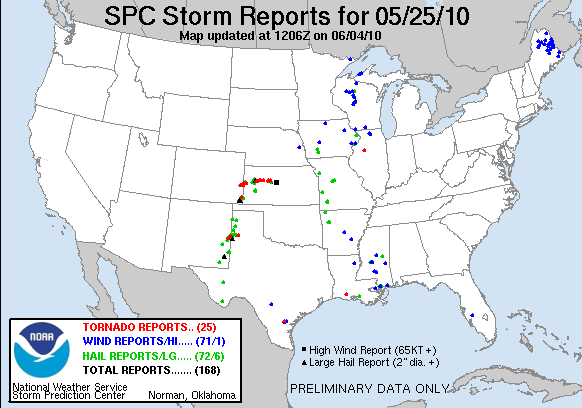We worked the area of the central High Plains today, with forecasters alternating between the Amarillo, Dodge City, and Pueblo WFOs. In fact, there were even severe storms in GLD area (the V2 storms) but we didn’t want to keep flipping to new WFOs, looking for more continuity. We opted to go with a “full-day” IOP (versus 3 hour max), starting the shift by examining the pre-storm GOES-R CI products like in a real WFO environment. It turns out that the visitors had no problem with the extended IOP, so this began a trend for the remainder of EWP2010 – nearly full-shift real-time IOPs. At times some of the forecasters would be taken aside for half the shift for the LMA archive case but for the most part, the remainder of EWP2010 operational shifts would be devoted mainly to real-time operations.
GOES-R CI products were once again sparse owing to cirrus, but the overshooting tops product got more of a workout. The isolated supercell in Baca County provided the best example of the product, giving more confidence to the forecasters in this radar-limited region. However, the enhanced-V detection algorithm didn’t have much even though the visible satellite data was showing these signatures. It was surmised that the coarseness of the 4 km IR data git these signatures, an issue that will be rectified by GOES-R’s increase spatial resolution. More information is reported in GOES-R HWT blog posts here and here.
This was the first time that the forecasters were using he MRMS data in a real-time IOP. Of particular note was the use of the Reflectivity at -20degC product, which is heavily used via the AWIPS Volume Browser at some WFOs (not using multi-radars, however). One of our forecasters had a special color map for the product, which added white and then blue and then magenta solid colors at 55, 60, and 65 dBZ, to help identify the 60 dBZ threshold, which is a good rule of thumb for the new 1″ severe hail size criteria. This was saved as the “CVKING” color map, after its originator, Jim Sieveking (LSX WFO). It was also found that the MESH was spot on with its size estimates, and the azimuthal shear products were useful for the TOR decisions.
Greg Stumpf (EWP2010 Operations Coordinator)

